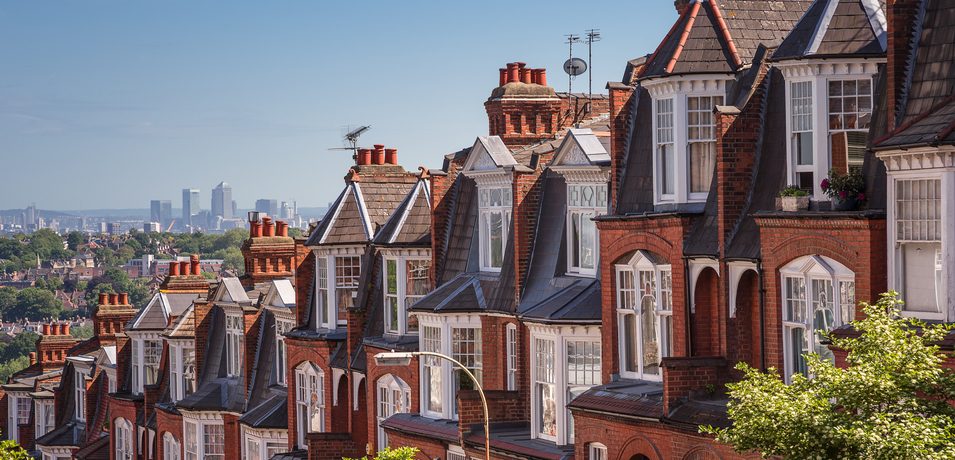Stamp Duty and the Property Market
The UK real estate market is plagued with a number of issues, but the one that seems to erode the health of the market the most is the stamp duty.

UK property buyers and sellers are plagued with big taxes and the stamp duty is one of the worst in cost and perception.
The new stamp duty rates:
- < £500,000: 0%
- between £500,001 and £925,000: 5%
- between £925,001 to £1.5m: 10%
- > £1.5m: 12%
Are You Supporting a Stamp Duty Holiday Extension?
The stamp duty’s effect prohibits young buyers from purchasing a home. It is applied to 9 out of every 10 home sales in the UK.
“The government will expect the change to stimulate more housing sales over the second half of the year and that savings made by buyers will be reinvested in home improvements, white goods and furniture, rather than bidding up the cost of housing.” — from Zoopla report.
It’s just one tax in a high tax/regulated market, yet may be damaging the long term health of the UK real estate market and economy. Since halting the SDLT, housing sales have improved although this may be contributing to higher home prices, due to an insufficient supply of houses for sale.
Of course, when the duty is reimposed, sales in 2021 could suffer again and prices fall.
Cause of the Real Estate Boom
The recent home sales and price surge is believed to be due to the return of pent up demand, low mortgage rates, stamp duty removal, and the preference of home buyers for a roomier place to live.
However, activity didn’t really jump until the stamp duty removal period, so the SDLT may be a key psychological factor. The homeowner wealth factor can color attitudes about buying property or spending as can employment levels. UK employment is suffering so we know it’s likely not in play in this market rising event.
The health of the residential housing market is also suppressed by NIMBYism, lack of housing construction policy, and big tax burdens just like it is in the US. Measures were introduced to help with the undersupply of housing, yet local authorities have resisted (not in my backyard) resulting in low new construction numbers.
Stamp Duty Relief Revives the Market
The Stamp Duty was temporarily removed in July for homes under 500,000, and the effect is wonderful. In fact, UK home sales in August 2020 rose 15.6% to 81,280 transactions. The latest quarterly transactions (June-August 2020) was 15.7% higher than the preceding 3 months (March-May 2020). And UK home prices hit their highest in 4 years in September, rising 1.6% month on month after August’s 2% jump. The average UK house price is now £245,747.

Screenshot courtesy of Halifax.co.uk.

Screenshot courtesy of Halifax.co.uk.
The government says the tax saved amounts to £3.8 Bn, (which shows how much money was removed from the real estate market). Many buyers and sellers might see it as a short window of opportunity to make their move. However, young buyers may still not be able to raise the deposit or qualify for home loans.
UK Housing Markets in Metamorphosis
As we covered in the UK housing market report and UK property market forecast , the UK real estate market has been undergoing a change. Migration outward from the inner cities to capital commuter towns is driving the market like it is in the US. Work at home along with online shopping are big trends. The high density inner city property market is suffering while single family, low density home sales outside of London and other big cities is rising.
The stamp duty has a depressive effect on the UK real estate market in that homes cost more thus reducing sales. Those who can barely afford a home purchase, such as Millennials, are certainly stopped in their tracks. While other home sellers are hoping to trade up or down don’t want to fork out a large chunk of their savings for the sake of a bigger house. It could be said to raise lettings prices as well.
Suppressing New Home Construction
Yet, UK buyers are looking for a bigger home with extra rooms for a «work at home office», and to have room to breathe and live. The isolation of the Covid shutdowns and restrictions is making people yearn for more freedom, space and a more relaxed lifestyle.
The stamp duty then suppresses these wishes along with new home construction thus powering down an industry that can raise the economy. All around, big taxes are a heavy weight on the housing market, economy, stock market and the British people. In heavily taxed Britain, the permanent removal of the stamp duty is part of a stimulative solution, and it appears to be working. Will it be extended beyond the spring?
The stamp duty is a very high 5% on most homes that you would purchase in London and especially outside London, and 2% for lower priced properties outside Greater London.
In 2019, stamp duty revenue plummeted and thus wasn’t generating the amount needed vs how much damage it was causing. And in 2020, the taxes collected have plummeted downward much further.
Total SDLT receipts in Q2 2020 were 41% lower than in Q1 2020 and 43% lower than in Q2 2019, mainly due to the impacts of COVID-19.
Due to Covid 19, the government was forced to drop the tax temporarily and we can see the benefits directly. When taxes are reduced, economies and markets grow and thrive.
Solutions for UK Real Estate Market
Rather than suppress purchases and sales, and collect big taxes from those who can’t afford them, the UK needs a new housing development effort. Unfortunately, the Covid 19 pandemic appears to have dried up new housing construction.
- scrap the stamp duty
- invest billions to encourage new housing construction
- invest in more rental housing of all types
- encourage foreign investors to invest in UK commercial and new rental housing developments
New Housing Starts and Completions
The ministry of housing communities and local government reported on the April to June 2020 new homes data.
The number of dwellings where – according to building control figures – building work has started on site was 15,930 in April to June 2020. This is a 52 per cent decrease when compared to last quarter. Total SDLT transactions in Q2 2020 were 39% lower than in Q1 2020 and 44% lower than in Q2 2019.
The number of dwellings completed – according to building control figures – on site was 15,950 in April to June 2020. This is a 62 per cent decrease when compared to last quarter and following on from the 5 per cent decrease in the previous quarterly change, this represents a steep fall after a period of sustained growth. » from a government report.
Can the Rental Market Play a Role?
Lack of affordability is a big problem which could power up the UK rental market in 2021. If young homebuyers prospects regain employment they may look to rent rather than buy.
Supporting rental housing in any type is perhaps a wiser solution for an ailing UK real estate market given the constraints of the economy and UK government tax revenue needs.
See also: Property Management Software Ratings | UK Housing Market Forecast | Rental Property Market Lettings UK | UK Lettings Agents | Berlin Property Market | Buy Property in Berlin | Australia Housing Market | Sydney Australia Property Market | How to Increase Rental Yields | Covid Foggers | Best Property Management Software | Flat Letting Prices | Rental Advertising | Write Rental Ad | Rental Market | Property Management Companies US




